It’s been a long two years so I am very excited to announce the release of my landscape photography-simplified ebook! It is instructional and should allow you to take your landscape photography to the next level.

Buy it here: https://www.e-junkie.com/i/119hd?card
Enjoy,
Roman

Have you ever wondered what it means to be a photographer?
In a way, photographs allow us to be time travelers! I want you to take a minute and think about that concept. Capturing an image is really only a speck in time yet the results defy time. What do I mean?
I have spent the last 30+ years of my life capturing those oh so brief moments in time. When I look back at any of them, I am immediately transported to that time and place where I can almost physically remember the smell of the air, the taste of the food, and even the palpable joy or sorrow of the moment. What other occupation can say that? This is conceptually a heavy burden and is why I continually work to perfect my craft. Even a mediocre picture, when that is all that is left, can have that power. You may scoff at that idea, but I want you you sit back and consider how many times you looked at an image and were teleported back to that exact moment.
I don’t normally photograph people but I did when my sons were growing up. I usually try to do everything I can to keep people out of my images. It was Pura’s nudging that compelled me take images during our travels with the boys and my parents. Even at home she chided me to take images at family events. Today, I am forever grateful that she did. I have a digital picture frames playing all the time on a loop in my house of many of those images and I consider it one of my most priceless possession. It takes me back to those moments, even after my father has passed. What other craft has that ability?
My wildlife photography generally lasts just a fraction of a second in most cases. My most famous image, of the Wildebeest crossing the Mara River, immediately gets my heart pumping when I see it hanging in my house! That image allow me to recall not only where I was but also whom I was with fulfilled a childhood dream!!!
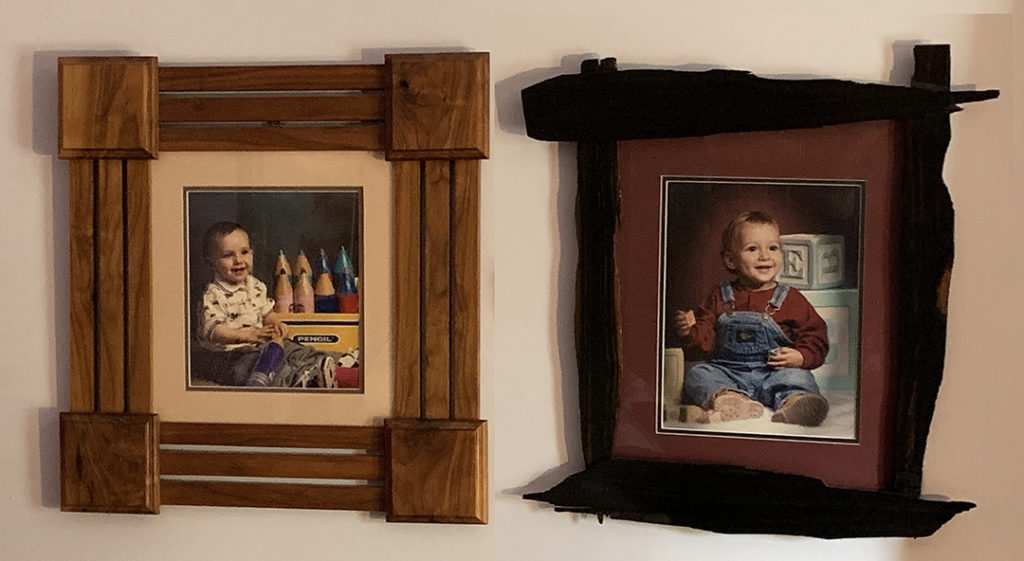
I wake up every morning to these images of my sons (this is an iPhone pic)… from Sears of all places, close to their first birthday, hanging in custom frames I made. In this image, their huge smiles are definitely deceiving. They weren’t actually happy… as a matter of fact they were really cranky! The simple infant game of peek a boo with their dad brought the smiles to their faces as an exasperated Pura and photographer did their absolute best to capture that moment. The power of that image, even though not mine, is very palpable and puts me in that moment.
Now imagine a world without those images. Our minds will eventually fade as we age, so photographs are most likely the only thing that will allows us to reliably go back in time and we must do everything we can to preserve them. When I am long gone, I can rest easy knowing that my images will allow my children, family, friends, and future generations to time travel with me. Next time you press that shutter, remember what you are actually capturing. That is the real power of a photograph.
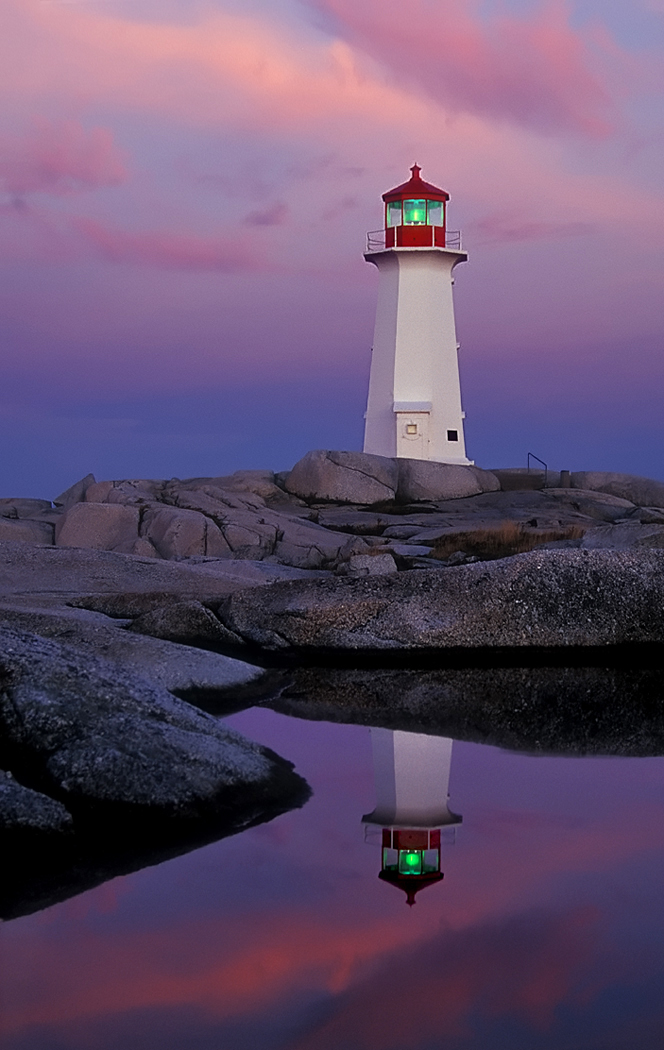
I have been photographing for about 30 years now and I just can’t help but think that I have been chasing the sun for just as long. The image above is around 20 years old (slide) and was probably the first to really drive the point home of when I needed to be out in the field, even if I skipped the rest of the day. I am constantly drawn to that pre-dawn and after sunset light that just makes landscapes magical, so I have put together two new programs: one to debut on Monday at the B&H Optic 2017 event and the other to debut at the NECCC annual conference later in July. I hope you can come and see these programs where I will share with you my first love, landscape photography, and my how my passion for it has not diminished and continues to feed my soul.
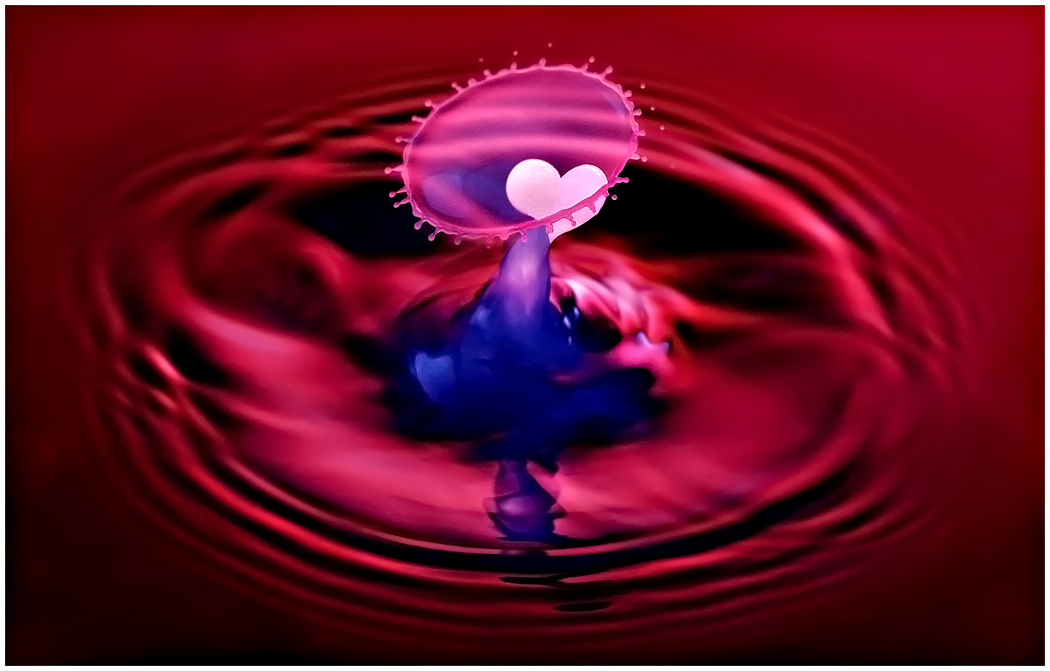
I was giving my hands on macro presentation at a local camera club a few days ago and the image above reminded me of the long journey and hard work that it took to get to where I am. It also sparked an idea to share with you about one thing that I have learned on that almost 30-year journey.
Mistake & failure are words that you need to embrace and the above image exemplifies that because it was a mistake! I was photographing water drops one day a few years back with my good friends Susan Candelario and Betty Wiley and as usual, having a great time brainstorming about different effects. We mixed up a bunch of different colors, placed a few gels on the flashes, and I placed my card into the camera. Someone bumped the table when I triggered the drop and I accidentally hit the trigger again. The image up top is the result. This was a total accident, and oh… by the way…we spent the next two hours trying to replicate the image and couldn’t.
What did we learn that day? Mistakes and failure in the world of digital photography are only failures and mistakes if you don’t learn from them!!! The worst thing that would have happened that day was that we learned not to bump the table during the drop shoot and delete it. We also later learned later on to not intentionally trip the trigger twice during the shoot because you can burn out the valve.
Your biggest fear in photography should be not pushing the shutter button because you may make a mistake or fail. Learn from it and move on. It only becomes a mistake or failure, if you don’t learn from it and repeat the mistake. I think photographers need to approach this art form like a scientific experiment…you may fail more often than you succeed but build on what you learn from those “failures” and pretty soon the mistakes will become a thing of the past.
If you would like to learn more about water drop photography you can find Susan’s eBook on the link.
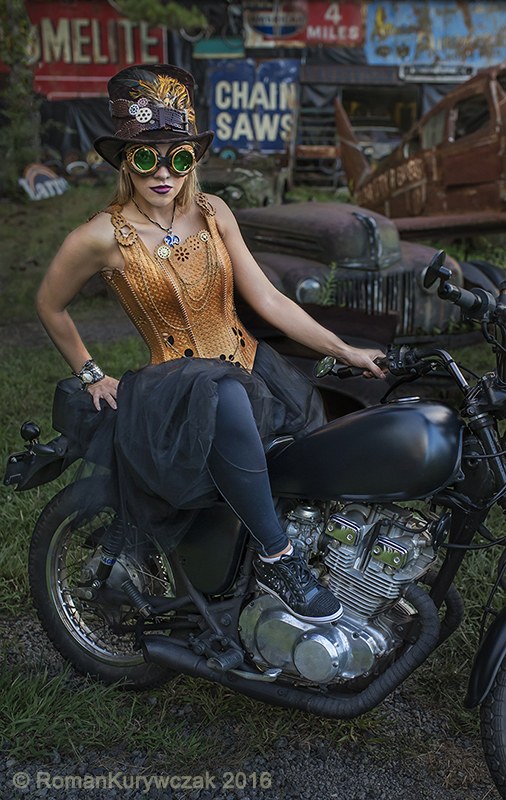
Last year I was invited to speak at a conference down in the Atlanta area for the Roswell Photographic Society. The event was to be held from September 9th through the 11th and I knew that I would like to add on a few days to do a photo shoot at a location called “Old Car City’ in White, Ga. My idea was to do a photo shoot there at night, but this time with models, which is very unusual for me. Fortunately for me, fellow Sigma Pro Judy Host lives in the Atlanta area so when I proposed the idea to her, she eagerly accepted my invitation to collaborate on this project.
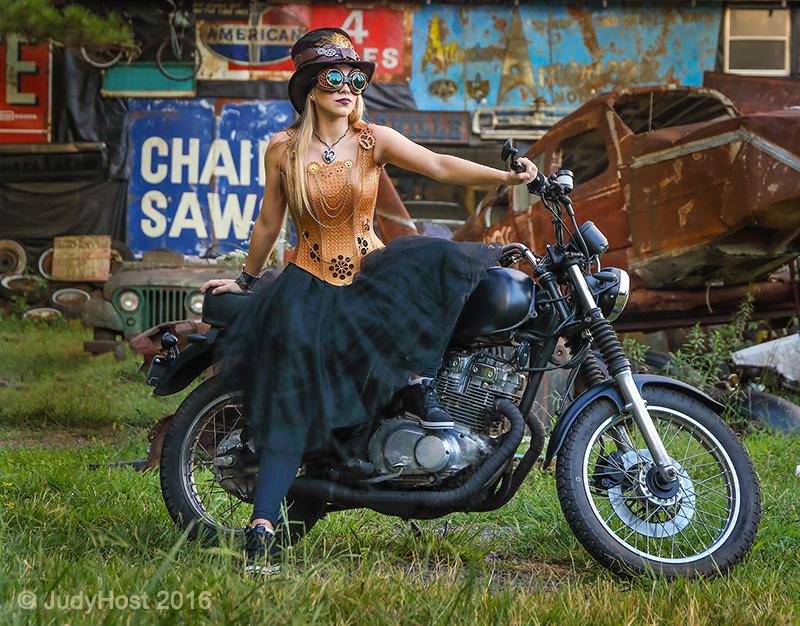
Judy Host: Collaboration between two very creative minds is a lot of fun. When Roman called me and asked if I would be interested in setting up a session like this, A Play Date, I jumped at the chance to spend time with him and learn as much as I could.
Shooting at night is not something I do in my normal mode of business. As a natural light photographer as long as there is light outside, I will find a way to use it. Once the sun sets though, it’s a different story.
This opportunity to work with Roman and play with Glow Sticks and Lume Cubes as our only light source was very intriguing. We each decided which Sigma lens we would use to give us two different perspectives of the same set up. Sigma’s 35mm 1.4 gave Roman the ability to photograph in the low light at 1.4 while my Sigma 24-105mm 4.0 was wide open at 4.0 causing me to push my ISO to 2000 to get the light I wanted. Towards the end of the evening I switched my lens to a Sigma 50mm 1.4 Art for our “Night Shoot”.
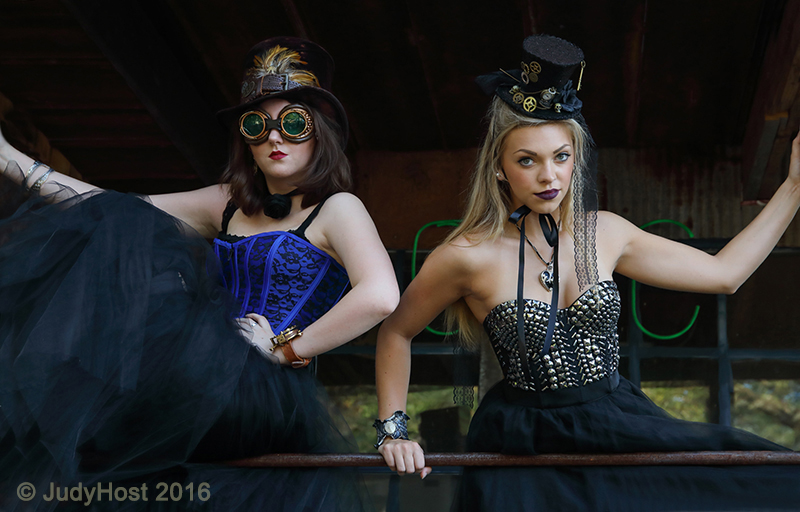
Judy: We were very fortunate to have two models to work with. We had 6 people photographing and we were constantly moving models around for the perfect light. Their outfits were designed so we could change them, giving us a different look for each girl. We also switched their hats, (which were purchased by Roman specifically for this session.) Each model did her own hair and makeup.
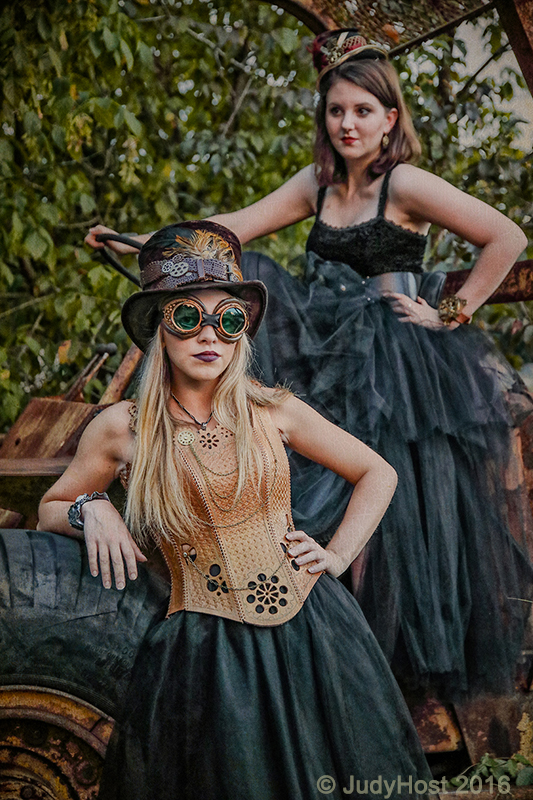
Our two “Steampunk” Models Isabel and Ashley.
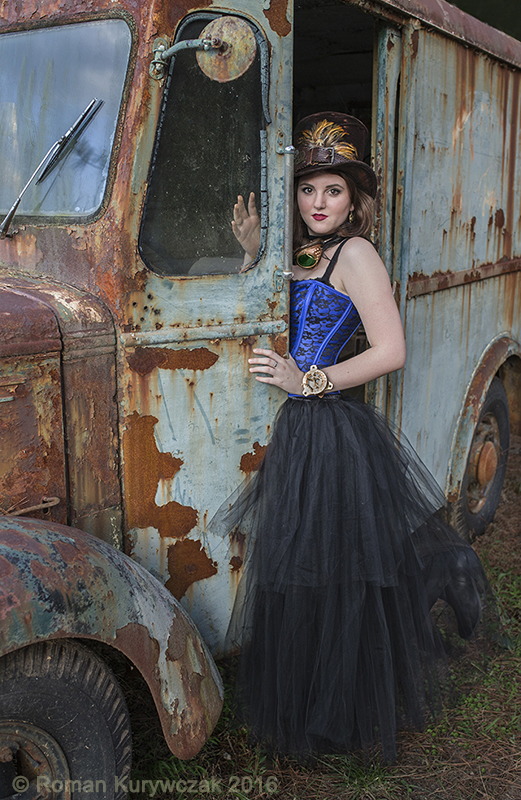
As a wildlife/nature photographer, I rarely photograph people unless it is for family events or special circumstances. I do like photographing old things but I would be taking myself way out of my comfort zone so I was excited to have a fellow pro and expert like Judy to help me push my limits as a photographer. Most of Judy’s photographs of people use only natural light so she would be stepping out of her comfort zone once the sun went down when I wanted to use different lights and strobes like I do for my night/astrophotography. I had originally wanted to do a pinup shoot at Old Car City but a few phone calls a month or so before the event and Judy and I decide that the models would dress up in “Steampunk” outfits, which seemed more appropriate for the location. Judy would arrange the wardrobe, makeup, and posing of the models and I was responsible for securing the location and lighting once the sun went down. I borrowed her husband Eddie’s Lume cube lights for a constant portable light source as well a wide variety of flashlights and glow lights so I could paint the subjects including the models, once the sun went down.
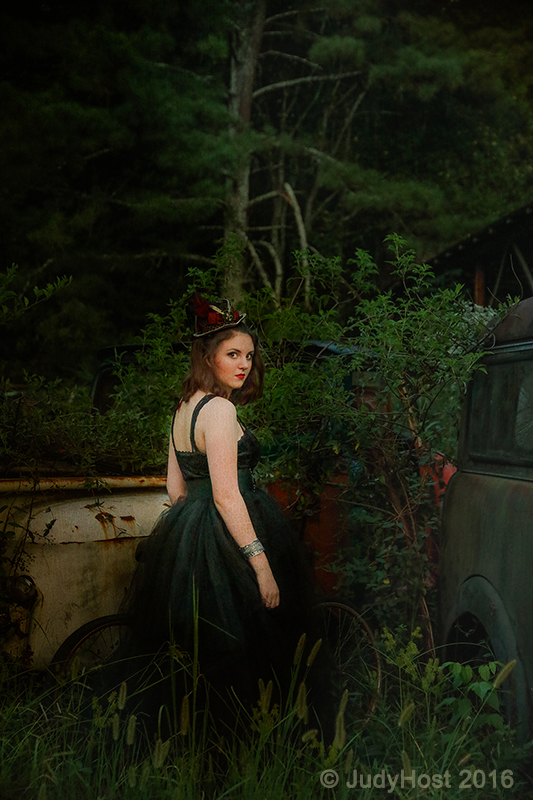
Judy: As the sun started to set, I found myself enjoying the eerie look of the old cars against the pale skin of our other model Isabel. In this image it looks as if there is only her walking towards the forest with an almost “Beware” kind of look on her face. Pushing my ISO one more time to 12800, I started to see some grain on her face and decided to add even more grain in my post processing. I added a grainy texture in Photoshop to age the image.

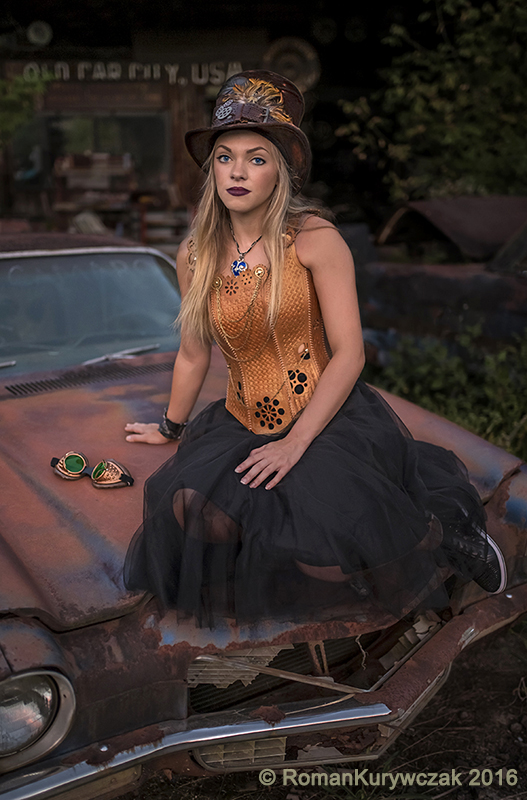
We arrived a few at “Old Car City” a few hours before sunset to take advantage of the wonderful soft light. Judy had gotten the models in wardrobe and makeup before we got to the location so we could quickly capture the beautiful soft light with the models really getting into the location. I took advantage of Judy’s posing expertise to focus my attention on composition. I was further stepping out of my comfort zone with my lens choice as I decided I would only use my a 35mm f/1.4 for the very first time for the entire shoot and at much more wide open apertures than I am used to during the day. The images of Ashley above was shot almost wide open at f/1.6 and f/1.4, which is an aperture I only normally use for my night shoots! Judy also reminded and encouraged me to take full body shots as well as close-ups during the entire shoot.
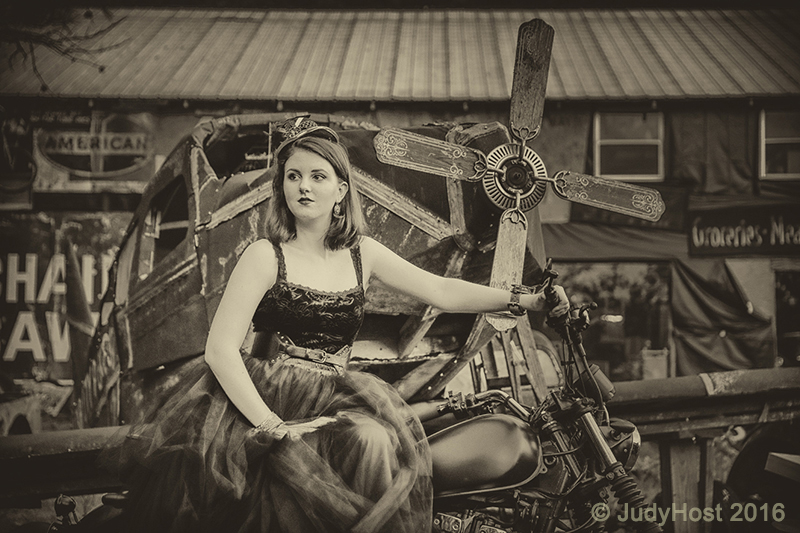
Processed in Photoshop. Black and White effect by NIK/Silver Efex Pro 2
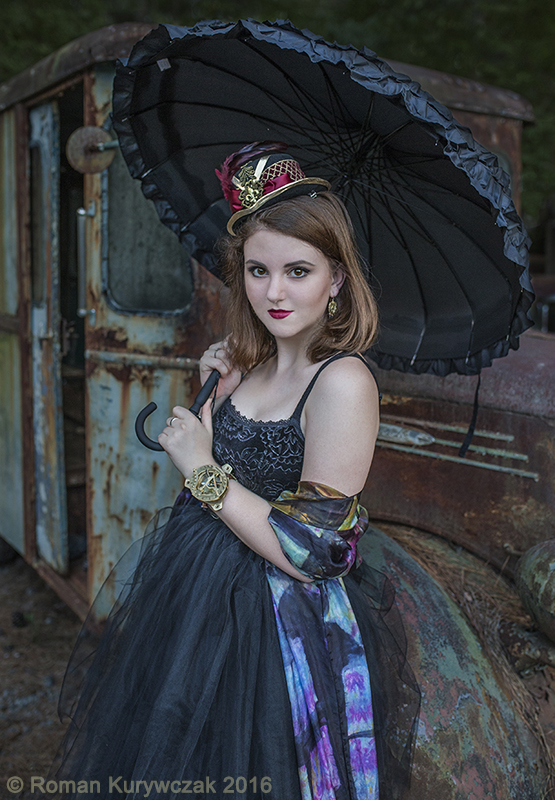
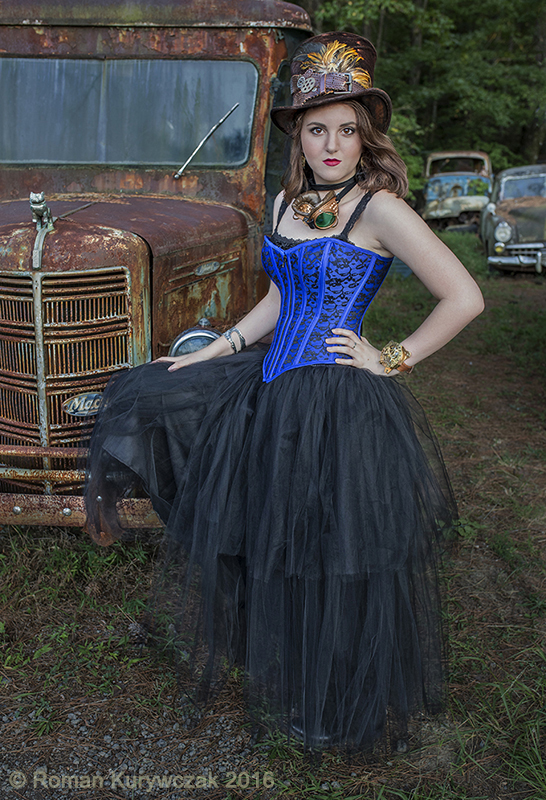
The outfits Judy chose were a perfect fit for the rusted old cars and trucks with the old Mack truck being one of my favorites. It doesn’t hurt when you have wonderful models like Isabel (pictured above) and Ashley to work with either who were eagerly getting into the shoot as much as we were! A wardrobe change while the light was starting to fade provided some final images of natural light while adding a few constant light sources once the sun went down, including a headlight of a motorcycle, made for some dramatic although eerie images. I was glad I could open up my aperture all the way to 1.4 on some of these images so I didn’t have to push my ISO much higher.

The image above was of Ashley was taken well after the sun had set. Positioning the cube light and glow sticks proved to be the most challenging and I must admit it was much more difficult to set up than I had imagined!

The humidity levels were very high this night and with our time running short we decided to call it quits with a few final shots. Everyone was exhausted but very excited on how the shoot had turned out. I look forward to collaborating with Judy on another of these shoots that will continue to challenge us both but were definitely a lot of fun! It was a privilege to work with such a great talent and it taught me one thing…..I won’t be quitting wildlife and nature photography anytime soon!!!
Judy Host’s bio:
M.Photog.,Cr.
Photographer, Educator, Lecturer, Portrait Specialist
Featured in Rangefinder magazine as one of “Today’s Top Children’s Photographers” Judy Host has redefined the Portrait Photography world with her unique talent for capturing the innocence and trust that lies within the heart of each individual and has earned her the respect and recognition of her colleagues. Her photography has been internationally recognized for its innovative style and technique. Recently her work was selected for exhibition in the Valade Family Gallery in Detroit, MI and the Crocker Art Museum in Sacramento, CA.
In addition, her work has been selected for national exhibition by the Professional Photographers of America, PPA from whom she has received the coveted Masters of Photography and Craftsman degrees. Among Judy’s awards for outstanding environmental portrait photography, she has earned multiple Kodak Gallery Awards, an award given to those photographers who excel in creativity and the pursuit of excellence in quality.
Honored as a Sigma Pro for the Sigma Corporation, a significant distinction shared with seven top professionals in the industry, see www.sigmaphoto.com/sigma-lounge/meet-the-pros.
A world traveler teaching seminars and workshops in environmental portraiture, specialized image processing, marketing and natural lighting, visit www.judyhost.com or contact her directly at judyhost@mac.com for more information.
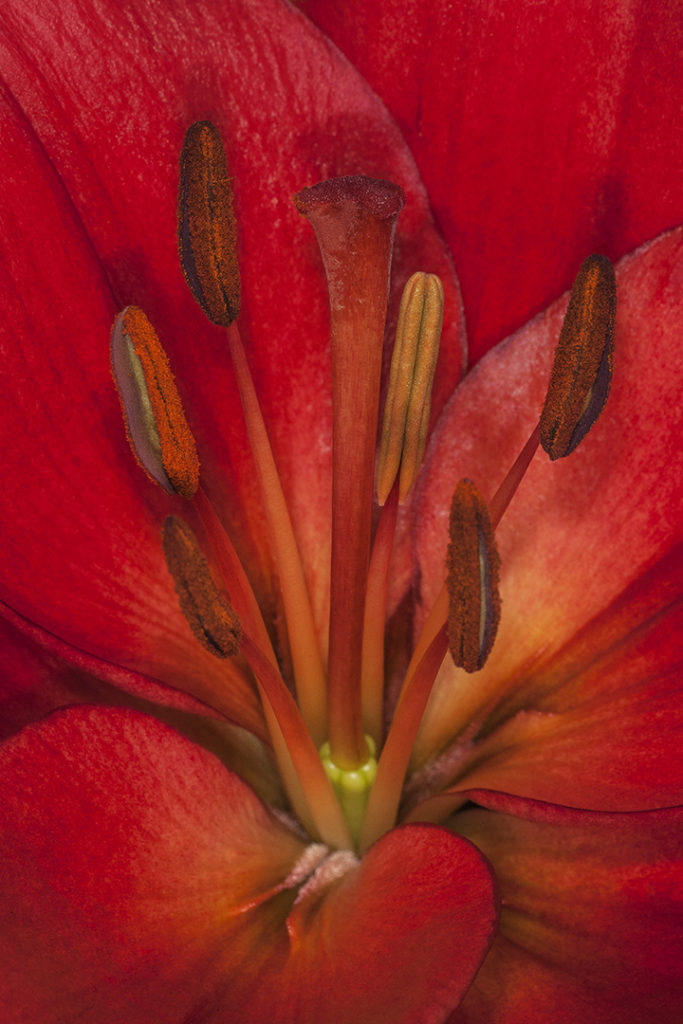
Whether it is a dramatic sunrise/sunset or a beautiful red flower, the color red is a challenging color to photograph. Why? In today’s digital photography world, most pros have taught you to push your histogram to the right edge without touching it and using your highlight alert indicator to show that you have no/very few blown highlights (aka blinkies). I teach this all the time on my workshops but did you ever take a picture with a lot of red, orange, or yellow in it and the color looked horrible even though your combined histogram looked perfect? We all have… and I really don’t have the answer as to why but I do have the solution for you. When photographing very vivid reds, oranges, and yellows, make sure you activate and check your RGB histogram. You will often see in these situations that your combined histogram looks perfect but the red (or sometimes the green) channel is clipped. Solution….underexpose until the channel is not clipping. Someone once tried to explain to me why this happens to the combined histogram but all I heard was the whah, whah, whah, whah, whah, whah Charlie Brown adult talk, In my opinion that shouldn’t happen but at least now you know the solution!
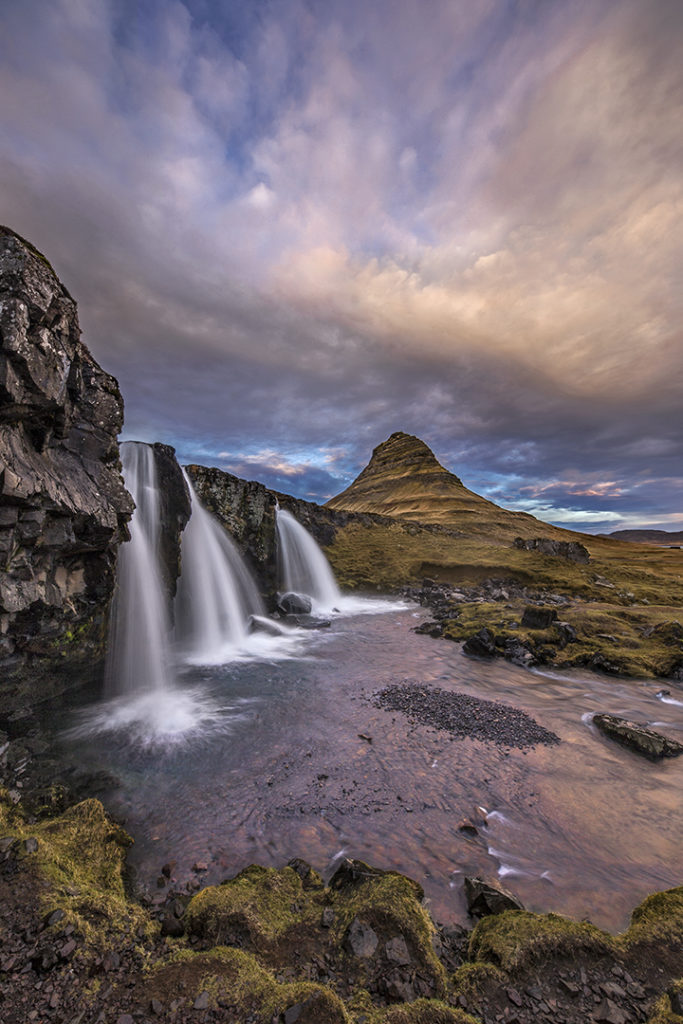
Many elements have an effect on the success of an image including color, composition, and subject, but it needs to have an immediate impact if it is to be truly successful and the most overlooked aspect of composition is composing vertically. It is by far my favorite element and combined with an ultra wide-angle lens and great clouds, makes the difference between average and spectacular. Compare these two images from my just concluded workshop to Iceland. The image below is from a higher vantage point at the falls of Mt. Kirkjufell with my new Sigma 12-24mm f/4 Art that shows the curve of the foreground and the entire scene with a pretty awesome sky I may add. I really like it but prefer the vertical image up top with the closer view of the falls and the sweeping sky! Why? To me the vertical emphasizes the form of the falls as well as the sky with both images at nearly the same focal length (the horizontal at 12mm and the vert at 13mm).
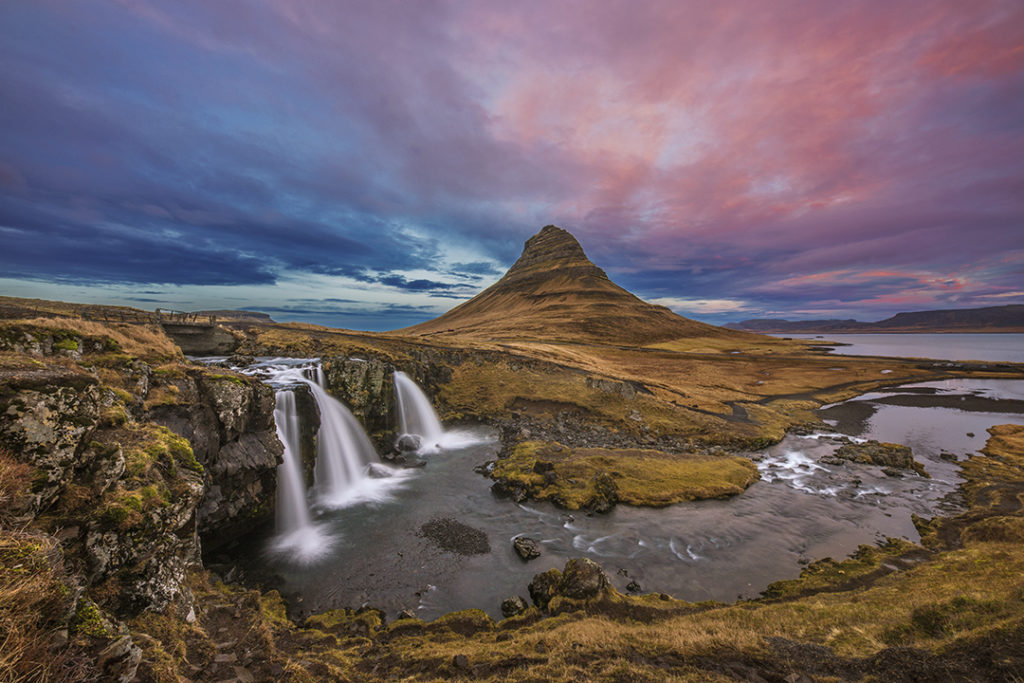
You should always consider shooting vertical out in the field and given that you have nothing to lose in the world of digital photography…. just take both versions and decide which you like best when you get home!
PS Magazine covers are vert!!!
I am thrilled to announce the release of my macro photography ebook: “Taking Your Macro Photography to the Next Level”.
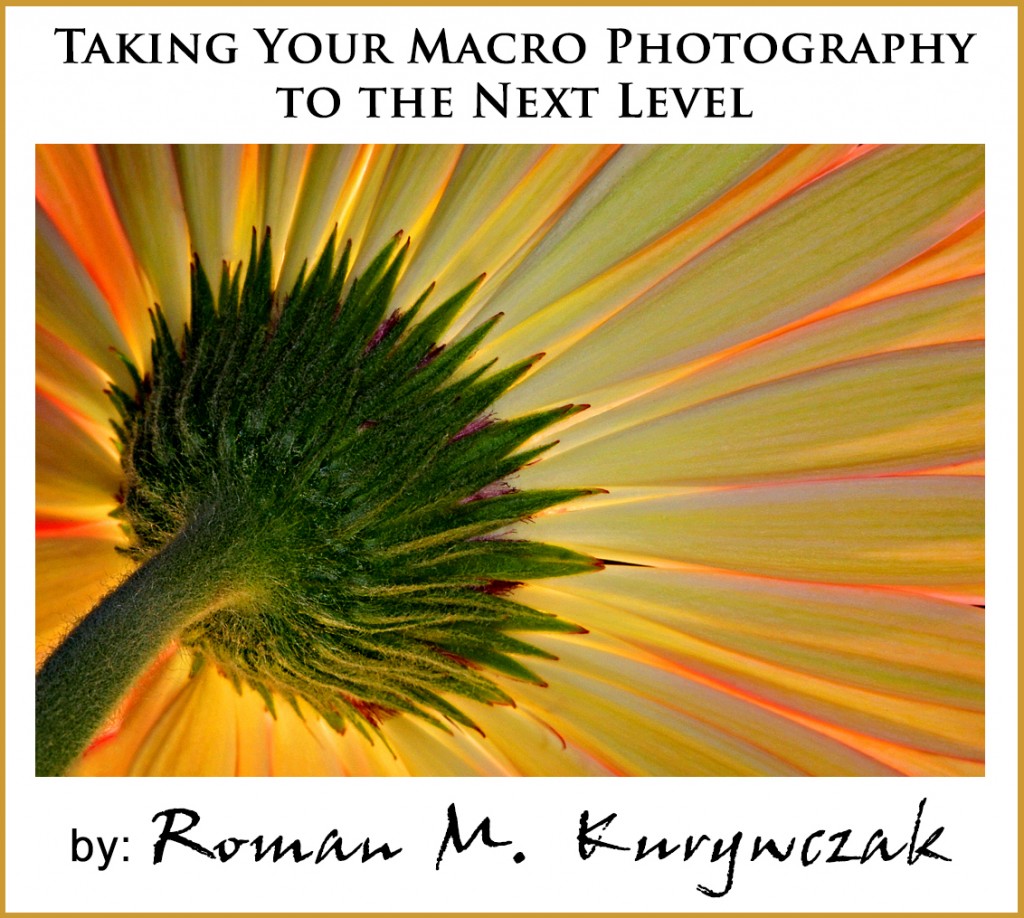
Have you ever wondered how the pros make stunning, tack sharp macro images? In my book I share inside tips and techniques used to create these beautiful photographs. I share my 20+ years of photography knowledge and my “secrets” to successful handheld macro work. Whether you shoot in the studio or in the field this book, which contains over 50 images and 6000 words, covers everything you need to know. Topics include camera settings (for location and studio work), gear, accessories, and most importantly lighting techniques. If you are ready to take your macro photography to the next level, this book is for you! Available for an immediate pdf download for $19.95.



